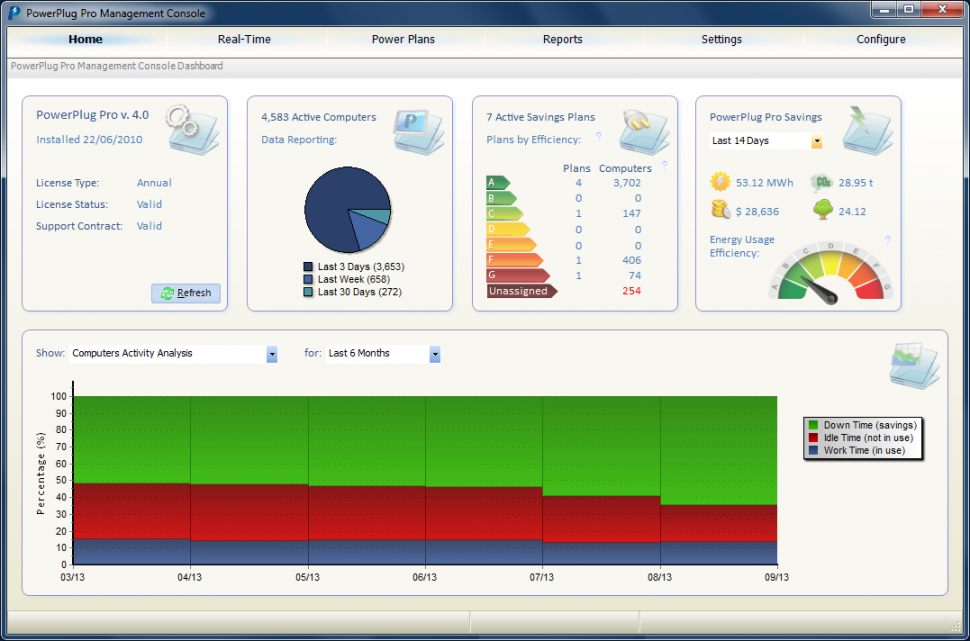If you work at a company that has over 200 PCs, you may be familiar with those IT emails saying “please don’t turn off your computers tonight, we’ll be performing a scheduled maintenance…” or “this is a reminder to please shut down your computers before vacation leave…” Managing a network of hundreds of desktop computers involves many tasks and has several ramifications, which is why finding the right centralized PC power management solution is so important. IT teams really shouldn’t be bothered with asking employees to turn their computers on/off or manually manage tasks which can be centralized (and the employees for that matter shouldn’t be bothered with these sort of requests either.)
So what are the actual benefits a large scale company gets from implementing a proper PC power management program?
• Power Savings: a desktop computer that is always on consumes about 90-100 W/hour – that’s 18 to 33 times more energy than a PC in power-saving mode, which consumes about 3-5 W/hour. For large organizations, energy savings of this capacity can translate into significant savings in electricity costs, but since employees usually leave their PCs on, it’s hard to achieve these savings without any power management program in place. While exact costs may vary (as these are dependent on energy prices in different regions), one desktop PC consumes roughly $150 worth of electricity per year – proper power management can cut that cost in half. At least.
• Uninterrupted Maintenance: one of the reasons organizational computers are usually left on is to enable IT maintenance tasks to run overnight or during general downtime hours. A good PC power management system enables maintenance to be performed even on PCs in power savings modes, as the system can control when to wake them from hibernation, enabling IT teams to define scheduled maintenance tasks as needed.
• Environmental Implications: large organizations have become increasingly aware of their environmental impacts in recent years, and take into account the fact that the extreme amounts of electricity they use take a toll on the environment. By implementing a reliable PC power management plan and making an effort to cut back on related electricity consumption, these companies can significantly reduce their carbon footprint.
• Monitoring & Reporting: implementing a PC power management system can offer additional perks beyond simple power saving; a good professional system will also provide the IT team with extra management tools to oversee their power saving plans, enabling them to optimize & schedule accordingly.
• Customizable Power Plans: not all centralized PC power management tools were created equal, and one of the benefits we offer with PowerPlug Pro (in addition to the abovementioned Reporting) is the ability to create customized power plans, and not settle for a basic one-plan-fits-all. PowerPlug Pro monitors and learns the network’s power consumption habits, enabling IT managers to tailor and implement a power savings plan that will reach optimal results & maximum savings for their organizational network.
In short, centralized PC power management helps organizations cut energy costs, saves IT managers time and tasks, and helps reduce environmental risks – it’s a win-win all around – from the employees, through the corporate level, to a global scale.

Dashboard of Centralized PC Power Management Software PowerPlug Pro




